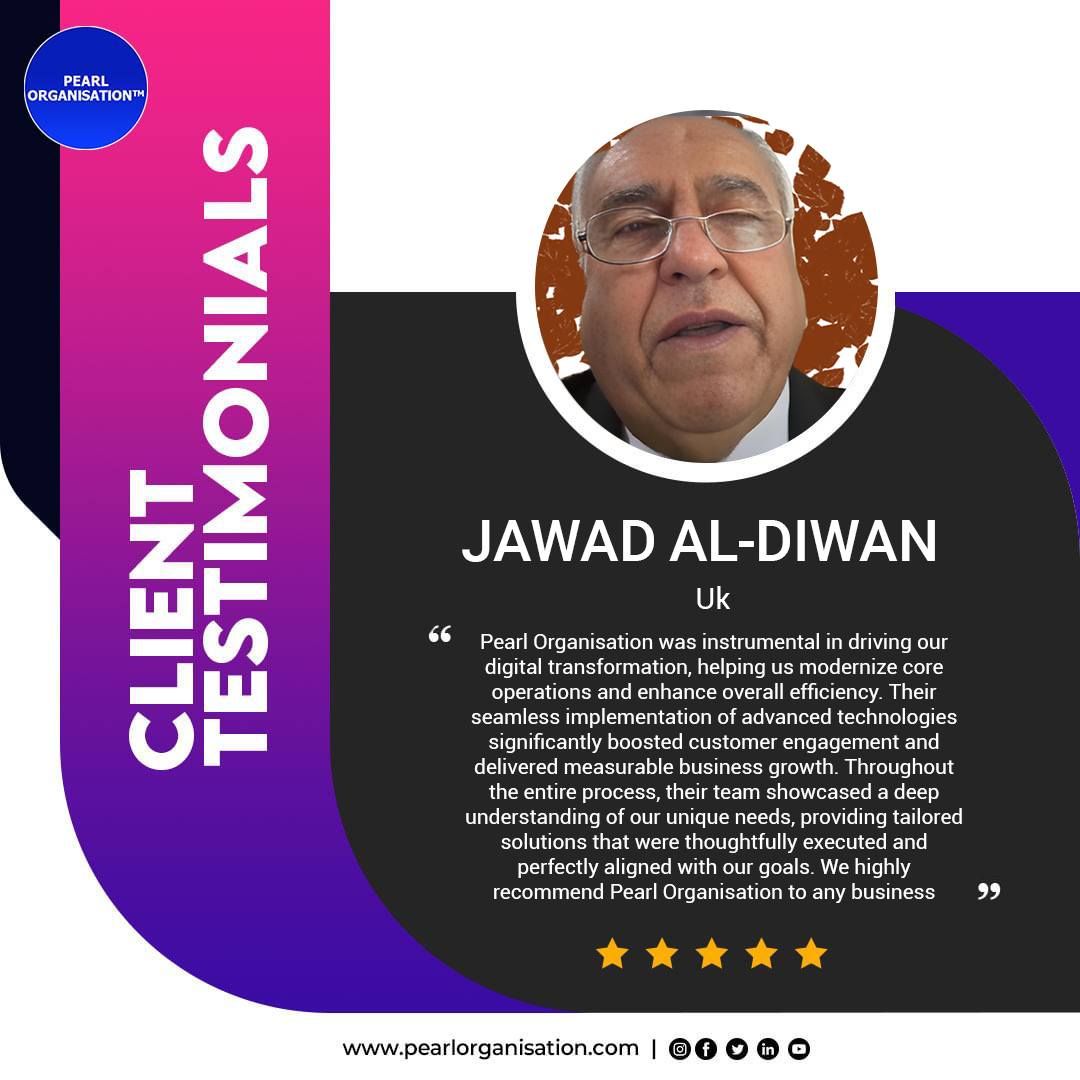🌐 The Future of Web 3.0: What It Means for Businesses and How to Prepare
- Larrisa

- May 10
- 5 min read

🚀 Introduction: From Web 1.0 to Web 3.0 – A Radical Evolution
The internet has evolved dramatically over the past three decades.
Web 1.0 was static and informational
Web 2.0 became interactive and social
Now, Web 3.0 is emerging as a decentralized, trustless, and user-controlled ecosystem
Web 3.0 is not just a trend — it's a paradigm shift that will redefine how businesses engage with users, manage data, and build digital trust. At Pearl Organisation, we help future-ready businesses embrace this transformation through cutting-edge web development, blockchain integration, and intelligent automation.
🔍 What Is Web 3.0?
Web 3.0 refers to the next generation of the internet that is decentralized, intelligent, and user-centric. It is built on technologies like:
🔗 Blockchain & Distributed Ledger Technology (DLT)
🪙 Cryptocurrencies & Smart Contracts
🖼️ NFTs & Digital Ownership
It emphasizes data ownership, user privacy, and trustless interactions — all powered by peer-to-peer networks rather than centralized servers.
🧠 Key Characteristics of Web 3.0
Feature | Description |
Decentralization | Data is stored on blockchain or distributed nodes, not controlled by big tech |
Trustless Interactions | No need for intermediaries — transactions are validated via code (smart contracts) |
Semantic Understanding | AI understands context and meaning, not just keywords |
User Ownership | Users own their identities, data, and digital assets |
Interoperability | Apps can interact seamlessly across blockchains and platforms |
📈 How Web 3.0 Will Impact Businesses
1. Redefining Digital Trust
With blockchain, businesses can offer tamper-proof transaction records, reducing fraud in:
Payments
Contracts
Identity verification
Supply chains
Smart contracts automate trust between unknown parties, lowering legal overhead and accelerating workflows.
2. User-Controlled Data Models
In Web 3.0, users own and control their data, choosing when and how to share it.
This shifts marketing from surveillance-driven to permission-based models, demanding:
3. Tokenization & Incentivized Communities
Businesses can use utility tokens or NFTs to:
Tokenomics adds a new layer of engagement, monetization, and ownership.
4. AI-Powered Customer Experiences
Web 3.0 sites and apps leverage AI to:
This leads to hyper-relevant, predictive digital experiences.
5. New Revenue Models Through Decentralized Platforms
Web 3.0 introduces possibilities like:
Pearl Organisation helps companies reimagine digital platforms with these decentralized models.
🛠️ Technologies Powering Web 3.0 Development
Layer | Tools & Frameworks |
Blockchain | Ethereum, Polygon, Solana, BNB Chain |
Smart Contracts | Solidity, Rust, Vyper |
Front-End | React, Next.js, Vue.js |
Backend | Node.js, GraphQL, IPFS |
Wallet Integration | MetaMask, WalletConnect, Coinbase Wallet |
AI/NLP | GPT APIs, TensorFlow, Hugging Face |
At Pearl Organisation, we use these technologies to build custom Web 3.0 solutions tailored to your business needs.
Industry | Application |
eCommerce | Blockchain-based marketplaces with NFT products & crypto payments |
Healthcare | Patient data secured via blockchain with full user control |
Education | Certificate verification using NFTs on blockchain |
Finance | DeFi platforms with no traditional intermediaries |
Real Estate | Tokenized property ownership and smart lease contracts |
📋 How Businesses Can Prepare for Web 3.0
Step 1: Understand the Implications
Assess how data decentralization, tokenization, and AI might disrupt your business model.
Step 2: Start With Hybrid Integrations
Adopt Web 3.0 gradually with:
Crypto payment gateways
NFT-based loyalty programs
Smart contract-based partner agreements
Step 3: Decentralize Key Processes
Move identity management, audits, or voting systems to blockchain-based tools.
Step 4: Engage Developers Who Know Web 3.0
Choose a partner like Pearl Organisation with proven Web 2.0 to Web 3.0 transformation capabilities.
🏆 Why Choose Pearl Organisation for Web 3.0 Development?
✅ Expertise across both traditional web and Web 3.0 platforms
✅ Hands-on experience with blockchain apps, crypto wallets, and smart contracts
✅ Full-stack development teams ready for enterprise, SME, or startup solutions
✅ Future-proof UI/UX + AI integration
✅ Transparent pricing, milestone-based delivery, and ongoing support
We don’t just build websites — we build next-generation digital ecosystems.
📞 Ready to Begin Your Web 3.0 Journey?
Whether you're looking to tokenize your services, launch a decentralized marketplace, or integrate blockchain payments — Pearl Organisation is here to build your Web 3.0 future.
📩 Request a free Web 3.0 consultation today and discover your transformation roadmap.
📚 Frequently Asked Questions – Web 3.0 for Business
Q: What is Web 3.0 and how is it different from Web 2.0?
A: Web 3.0 is the next stage in the evolution of the internet, focused on decentralization, user data ownership, artificial intelligence, and blockchain. Unlike Web 2.0, which relies on centralized platforms (Google, Facebook, etc.), Web 3.0 operates on peer-to-peer networks, ensuring users have greater control over their data and digital identities.
Q: How can Web 3.0 impact businesses?
A: Web 3.0 changes how businesses manage customer relationships, data security, and transactions. It introduces new models such as:
Tokenized customer engagement
AI-driven content personalization
Decentralized data storage
Smart contracts for automation
This allows businesses to operate with greater transparency, efficiency, and user trust.
Q: What technologies are used in Web 3.0 development?
A: Web 3.0 solutions rely on a combination of:
Blockchain platforms like Ethereum, Polygon, and Solana
Smart contracts written in Solidity or Rust
Decentralized storage like IPFS
Front-end frameworks such as React, Vue, and Next.js
Wallet integration tools like MetaMask or WalletConnect
AI engines such as GPT, TensorFlow, and OpenAI APIs
Pearl Organisation leverages all of these technologies to build Web 3.0 platforms for business.
Q: Is Web 3.0 secure for commercial applications?
A: Yes. Web 3.0 is inherently designed for trustless environments, meaning users do not have to rely on a central authority. With encryption, smart contract-based logic, and blockchain audit trails, Web 3.0 offers a highly secure foundation. However, it requires professional implementation to avoid vulnerabilities — which Pearl Organisation ensures through best practices.
Q: Can existing websites or apps be upgraded to Web 3.0?
A: Absolutely. Pearl Organisation helps clients migrate to Web 3.0 in stages:
This phased approach ensures continuity while unlocking next-gen features.
Q: What industries will benefit most from Web 3.0 adoption?
A: While almost every sector can benefit, top industries embracing Web 3.0 include:
Q: Does Pearl Organisation offer Web 3.0 consulting and development?
A: Yes. Pearl Organisation provides:
Web 3.0 architecture planning
Smart contract development
UI/UX for decentralized platforms
Blockchain integration
Wallet and tokenomics consultation
We serve startups, SMEs, and enterprises looking to lead in the decentralized digital space.




































